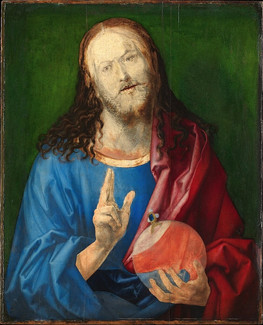Albrecht Durer
- Aljoheri
- Feb 28, 2024
- 2 min read
Albrecht Dürer, (Albrecht Durer): Biography and Works

Albrecht Durer, born in 1471 in Nuremberg, Germany, was a prominent painter, printmaker, and theorist of the German Renaissance. His artistic brilliance and innovative creations make him comparable to renowned artists such as Michelangelo and Leonardo da Vinci. Dürer's ability to adapt the principles of the Italian Renaissance to the northern European style set him apart from his contemporaries.
As a painter and printmaker, Dürer's works are highly regarded for their technical skill, attention to detail, and expressive qualities. He was known for his use of woodcuts, engravings, and watercolors. Dürer's wide range of artistic techniques allowed him to explore various genres, including religious and mythological subjects, portraits, landscapes, and even scientific illustrations. Dürer's impact on the art world was not limited to his exceptional skills and prolific output.
His influence extended beyond the realm of art, as he played a significant role in the development of artistic theory and practice. His theoretical writings, such as his treatise on proportions and perspective, have had a lasting impact on artists and art historians. Dürer's contributions to the art world were not only limited to his extraordinary skills and extensive body of work. He also had a keen interest in the societal and religious changes taking place during the Reformation.
Dürer's artistic career coincided with the rise of the Reformation, a period of religious upheaval in Europe. During this time, Dürer's works reflected the changing religious and social landscape. His famous engraving "Knight, Death, and the Devil" is often interpreted as a commentary on the strength of faith in the face of mortality and the moral challenges of the time.
Dürer's exploration of religious themes in his art, such as in "Knight, Death, and the Devil," demonstrates his engagement with the broader issues of his time. His art not only reflects his technical mastery, but also serves as a commentary on the religious and social complexities of the Reformation era.
Dürer's art was not just visually captivating, but also intellectually stimulating. It invited viewers to contemplate deeper meanings and engage with the cultural, religious, and social issues of his time.
Dürer's art continues to captivate and inspire audiences today, as his innovative techniques, profound themes, and timeless appeal transcend the boundaries of time and culture. Dürer's enduring legacy as a master artist and intellectual visionary is a testament to his profound impact on the art world and his ability to engage with the human experience on multiple levels. His extensive exploration of artistic techniques and subject matters, coupled with his profound engagement with the societal and religious changes of his time, solidifies Dürer as a significant figure in the development of artistic theory and practice.
Dürer's exceptional skills and prolific output have solidified his status as one of the greatest artists of the German Renaissance.
References
Hutchison, C, J. (2014) Albrecht Dürer - Art History - Oxford Bibliographies. Available at: https://www.oxfordbibliographies.com/display/document/obo-9780199920105/obo-9780199920105-0039.xml.
































Comments